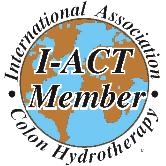Self Basal Temperature Test
There is considerable evidence showing that the current blood tests for the diagnosis of mild sub-clinical hypothyroidism can be misleading. In his book, Hypothyroidism, an Unsuspected Illness, Broda Barnes, MD and Endocrinologist, explains that detecting low thyroid function is as simple as checking basal (baseline upon awakening) temperature.
Instructions:
Place a thermometer (preferably digital) within easy reach on the bedside. If possible, avoid using a mercury thermometer to eliminate the possibility of accidental breakage and the potential mercury toxicity. If you use a mercury thermometer, take measures to prevent breakage.
Put the thermometer in your armpit for five minutes. Do this before you've gotten out of bed, had coffee or food or done anything significantly physical. Dr. Barnes suggests using the axillary (armpit) temperature, rather than the mouth, because so many people have low-grade unsuspected sinus infections. These infections generate heat only in the oral cavity, thereby falsely raising the oral temperature. If you do not have infections, you may take your oral temperature. For young children or the disabled, you may use the rectal temperature.
Record your temperature each morning for five days.
For women, additional consideration is needed during ovulation, since ovulation somewhat elevates temperature. Because of this, women who menstruate should start recording their temperature on the second or third day of menstruation.
Normal axillary (arm pit) or oral temperature is in the range of 97.8-98.2 degrees F. Normal rectal temperature is 98.8-99.2 degrees F. Data on your daily basal temperatures will assist in assessing your cellular thyroid hormone activity. Dr. Barnes estimates that greater than 40% of the adult population has hypothyroidism, hypertension, obesity, depression, as well as constipation and many other ailments.

